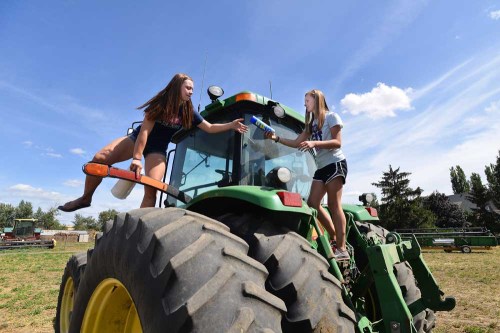Input costs weigh on NW wheat farmers heading into spring
Published 3:30 pm Friday, April 7, 2023

- Sixth-generation farmers and sisters Sierra, and Ellie Scheibner, clean the windows of a tractor before the family begins the wheat harvest in 2018 on the family farm outside of Athena. High input costs and difficulty getting replacement parts for equipment are major concerns in 2023 for Northwest wheat farmers.
BOISE — As a late spring beckons, input costs are top of mind for Northwest wheat farmers.
“Especially after last year’s input prices increased so exorbitantly in a short period of time and with rising inflation,” said Britany Hurst Marchant, Idaho Wheat Commission executive director. “We have seen fertilizer prices soften a bit, which is helpful, but fuel and transportation costs are still high for everyone, and those are all factors farmers consider when making seasonal decisions.”
Trending
“The largest factors weighing on minds are our input costs and borrowing costs and how that will track against crop production and prices this year,” said Amanda Hoey, Oregon Wheat CEO.
High input costs and difficulty getting replacement parts for equipment remain “significant” concerns, said Casey Chumrau, executive director of the Washington Grain Commission.
“Wheat and barley have smaller profit margins than many other crops, therefore an increased cost of production leaves very little wiggle room,” Chumrau said. “Additionally, there is a small window of time for producers to plant or harvest, which means they need the equipment to be ready when the weather cooperates.”
Idaho’s winter wheat crop is starting to turn green after a long winter, but has not started growing yet in most places in the state, Marchant said. In higher elevations, the winter wheat crop is still covered by snow.
Field work in Oregon is “quite a bit behind the usual timing,” after the long period of cooler weather, Hoey said.
Snowfall and snow water equivalent are above average for all basins in Idaho, which is “great news” for irrigators and the reservoir system, Marchant said. The commission is optimistic that subsoil moisture is dryland fields has increased “significantly” because of the snowfall this year.
Trending
Oregon’s drought monitor is improved, particularly in comparison to this point last year, Hoey said.
“For some of our irrigated areas, we have seen substantial change in relation to water prospects,” she said. “For instance, with the Treasure Valley, and with more water, we see some anticipated shift to crops other than wheat if it is not in the rotation.”
Winter in Washington is lingering and wheat is delayed coming out of dormancy in many areas, Chumrau said.
“So much can happen between now and harvest, but all farmers will tell you they need good spring rains to get the winter wheat growing and fields ready for spring planting,” she said. “Despite heavy and consistent snowfall this winter, the soil moisture profile remains drier than preferred.”








